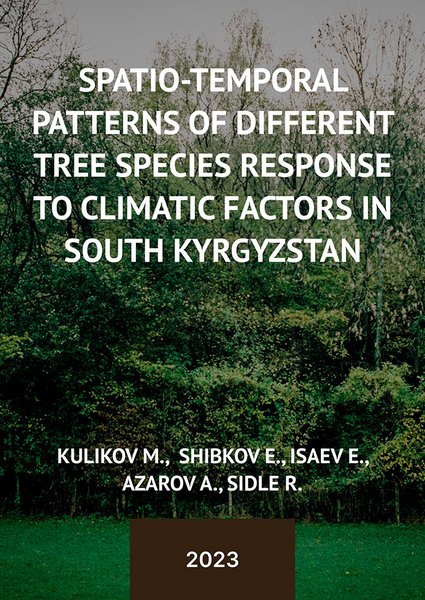




Year: 2023
Collections: Scientific Publications
Topics: Climate
Authors: Kulikov M., Shibkov E., Isaev E., Azarov A., Sidle R.
Countries: Kyrgyzstan
Source: Central Asian Journal of Sustainability and Climate Research
Understanding forest phenology is essential for monitoring global carbon budgets and managing vegetation resources in a changing climate. In southern Kyrgyzstan, walnut and wild apple trees dominate the forest landscape. These forests contain unique genetic diversity and offer potential for the development of climate-resilient crop varieties. They also support local communities through activities such as grazing, firewood collection, and fruit harvesting. However, these practices pose a threat to natural regeneration. Climate change exacerbates these challenges by altering their ecological niche. Despite this, few studies have examined forest phenology and its relationship to climate in Kyrgyzstan.
Downloads:
Understanding forest phenology is essential for monitoring global carbon budgets and managing vegetation resources in a changing climate. In southern Kyrgyzstan, walnut and wild apple trees dominate the forest landscape. These forests contain unique genetic diversity and offer potential for the development of climate-resilient crop varieties. They also support local communities through activities such as grazing, firewood collection, and fruit harvesting. However, these practices pose a threat to natural regeneration. Climate change exacerbates these challenges by altering their ecological niche. Despite this, few studies have examined forest phenology and its relationship to climate in Kyrgyzstan. To address this gap, we collected ecological data from forest plots in several protected areas and one forestry unit. This included tree species coordinates and landscape. Time series of vegetation indices, land surface temperature and precipitation were generated from remote sensing data. Regression analyses showed that temperature trends had limited predictive power for vegetation, while seasonal temperature variations had a positive effect on vegetation until excessive heat was reached, which had a negative effect. Precipitation trends and seasons had the most significant effects on vegetation, with lagged effects. Regression models were developed for Juglans regia L. (R2=0.8) and Malus spp. (R2=0.75) to predict vegetation index from temperature and precipitation data with high accuracy. Spatial heterogeneity in species response to climatic factors was evident within a small area. The study highlights the influence of landscape and climatic diversity on forest dynamics and emphasizes the importance of seasonal climate patterns over interannual trends.
По всем вопросам сотрудничества обращайтесь по эл.адресу или телефону: